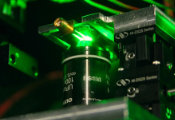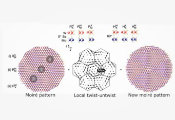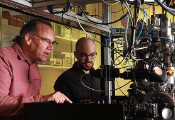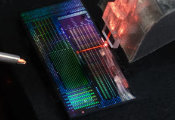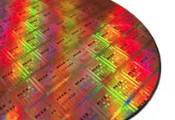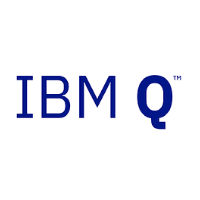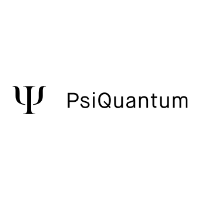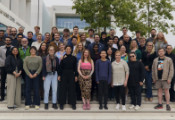IBM Collaborates Across Four National Quantum Innovation Centers to Help Drive the Future of Quantum-Centric Supercomputing
November 04, 2025 -- Today, the United States Department of Energy (DoE) announced the continued funding of the National Quantum Information Science Research Centers (NQISRCs). IBM applaud the DoE for continuing to promote quantum science in the United States, and they are committed to the success of these centers and accelerating their country’s global leadership in quantum computing.
Under the 2018 National Quantum Initiative Act, the DoE authorized up to $625 million to establish five quantum information science centers to promote research into quantum computing. This law funded the five NQISRCs, of which IBM is now a member of four. In collaboration with these centers, IBM has been working to realize a vision for the future of computing: quantum-centric supercomputing.
Quantum centric-supercomputing (QCSC) is a compute paradigm which uses different compute capabilities—CPUs, GPUs, and QPUs—in a tightly-coupled architecture to optimize the ability beyond any hardware alone. Realizing a quantum-centric supercomputer means building not just a scalable fault-tolerant quantum computer, but also the software and infrastructure required to sew quantum into the overarching QCSC compute fabric. Furthermore, the full promise of a quantum technological revolution will lie in unifying QCSC together with the other critical quantum technology pillars: quantum sensing and quantum communication. Integrating these pillars could help realize a future quantum computing internet—where multiple quantum processors operate together as one system—and usher in key national strategic and business leadership.
To realize this vision, two primary thrusts of exploration are absolutely critical, which IBM is committing to working on with four of the NQISRCs: scaling towards a future quantum computing internet, and exploring algorithm development to drive real applications for scientific computing and beyond.
Scaling toward a future quantum computing internet
The challenge of scaling towards a future quantum computing internet lies in engineering a cohesive architecture that seamlessly links the elements of computing, communication, and sensing. A critical first step is to demonstrate the extensibility of quantum computing networks, even within the datacenter at the scale of meters.
IBM is embarking to explore physically linked, disaggregated, cryogenically housed IBM quantum computers. As part of this effort, IBM is aiming to work with the Superconducting Quantum Materials and Systems Center (SQMS) at Fermi National Accelerator Laboratory for which discussions are currently underway. IBM is introducing a key interface to its quantum computers, a Quantum Networking Unit (QNU), which will enable extensible microwave-based link research and prototyping. A goal for the proposed study with SQMS is to entangle two IBM quantum computers in separate cryogenic infrastructure, linked together by a microwave-based quantum network as an interconnected datacenter demonstrator within five years. SQMS at Fermilab is a world leader in high quality scalable microwave cavities and microwave transmission links.
IBM intends to explore avenues for research with SQMS on large-scale cryogenics, superconducting qubit noise sources, quantum interconnects, quantum computing applications for fundamental physics, and quantum workforce development as part of the relationship.
To further scale how multiple, interconnected quantum computers could be linked in the future, IBM also hopes to work with Q-NEXT at Argonne on establishing efficient quantum networks through optical links connected to IBM QNUs. Here, the key technology gap is the realization of an efficient microwave-optic transducer, a nonlinear optical device that converts the frequency of microwave photons up to the optical domain at a single-photon level. The work under consideration with Q-NEXT thus addresses a longer distance, at the scale of hundreds of meters to kilometers that would enable greater distances than what would be studied under the prospective SQMS program.
Exploring quantum algorithms and applications for scientific computing
As quantum computers mature, IBM is entering a new era of algorithms discovery. IBM can now tackle the question of what they will use quantum computers for through empirical tests of heuristic algorithms on real world problems. In parallel, they must rigorously verify when quantum computers can outperform classical methods.
The next frontier of computation will leverage resources from quantum and classical computers to solve problems in novel ways. This will require innovation in algorithms that use quantum subroutines to accelerate QCSC workflows. Extending the performance of those quantum subroutines will rely on improvements in the hardware as well as capabilities like error mitigation and post selected error correction or even hierarchical error correction codes that can be used to extract accurate measurements from noisy quantum circuits.
IBM intends to bring this focus on algorithms and applications to the NQISRCs through the Quantum Science Center (QSC) at Oak Ridge National Laboratory. IBM and QSC aim to find use cases that demonstrate quantum utility (which are beyond the capabilities of brute-force classical methods) and extend those which offer the promise of quantum advantage. This means designing new quantum algorithms and advanced error mitigation and correction techniques to extend the computational capacity of quantum computers. There, we’re also working to ensure that quantum works seamlessly alongside high-performance computing as part of an overarching quantum-centric supercomputing architecture, including mapping out hierarchical quantum error correction decoder strategies towards the next generation of fault-tolerant quantum computers. Ultimately, this work will help to realize the center’s mission of using quantum computing for the study of exotic materials.
IBM must also apply algorithms to real applications relevant for scientific research. For this, IBM is also aiming to work with Brookhaven National Lab’s Co-design Center for Quantum Advantage (C2QA) on applications in high-energy physics and condensed matter. Their goal will be to translate problems in the physical sciences to quantum circuits and experimentally test them on real hardware.
IBM applaud the DoE for continuing to fund these mission-critical centers as the United States works to realize quantum-centric supercomputing and to maintain its global leadership in the rapidly accelerating field of quantum computing. IBM hopes that this funding will continue to turbocharge progress in this field, and most importantly, foster a collaborative quantum computing ecosystem in the United States so that together, they can realize useful quantum computing at scale.


